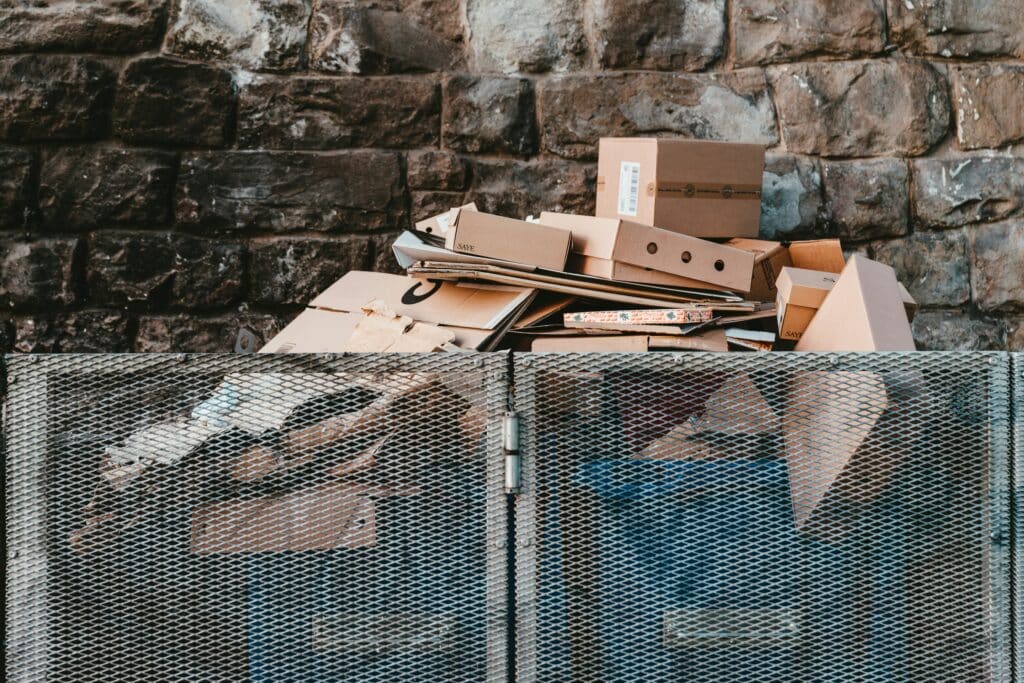Cardboard is one of the most-used packaging materials on the planet. Practically every business that ships anything uses it.
Unfortunately, production involves considerable land use, deforestation and energy consumption. As such, it can have a significantly negative environmental impact.
The good news is that both main forms of cardboard are recyclable. Paperboard, also called chipboard, and corrugated cardboard can both enter the circular economy multiple times.
This post describes how the cardboard recycling process works.
Step 1: Collection
The first step is to collect the cardboard. Recyclers either do this via public waste collection or by organising shipments directly from cardboard-consuming businesses. Most recycling facilities specify the type of cardboard they will accept from homeowners and businesses. They then trust them to include only qualifying items in shipments.
Step 2: Sorting
Waste is then shipped to the recycling plant. Once it arrives, staff begin the task of sorting through it. Most plants separate coated and non-coated boxes, and paperboard from corrugated cardboard.
Step 3: Bale The Cardboard
Once staff complete sorting, they then send the material to the baling machine. This device compresses cardboard into small bales that are easy to handle.
The characteristics of coated and non-coated bales are different. Since it has to withstand the elements, most outer-layer corrugated cardboard is coated.
Step 4: Pulping
Once machines form the bales, they are ready for pulping. Pulping turns the bales into a uniform material which manufacturers can then transform into new products.
Cardboard is made of tiny plant fibres that give the material strength. During pulping, these fibres break down in a way that allows them to be incorporated into new materials.
The least energy-intensive way to do this is to simply soak the cardboard in water and then churn it up. However, some recyclers also use chemical methods to speed the process along.
Step 5: Add Fresh Material
While it is possible to make cardboard pulp into paper directly, it is often low-quality. Therefore, recycles add fresh wood chips to enrich the mixture.
Step 6: Filtering
The next step is to filter the mixture and remove any unwanted ink. Primarily, filtering involves getting rid of any glue or tape commonly used in cardboard box construction. Recyclers remove these items using decolourisation chemicals and floatation devices.
Step 7: Completion
Once the pulp is in a desirable state, manufacturers add fresh materials to the mixture. They then press the substance into the desired shape before drying it, usually on a conveyor belt. Industrial drying machines remove the excess water to give the new paper or cardboard a crisp finish.
Wrapping Up
From an environmental standpoint, recycling cardboard makes a lot of sense. First, it dramatically reduces landfill usage. Estimates suggest that about 40% of all waste that goes into the ground is cardboard or one of its derivatives.
Second, recycling cardboard reduces land use. Because it saves trees, growers don’t need to farm as many, allowing countries and communities to use their land for other purposes.
And lastly, recycling cardboard also saves water, something that traditional papermaking uses a lot of.
Here at Devon Contract Waste, we specialise in providing sustainable and environmentally responsible complete waste disposal and management solutions.
Get in touch with us to find out how you could benefit from our services.
